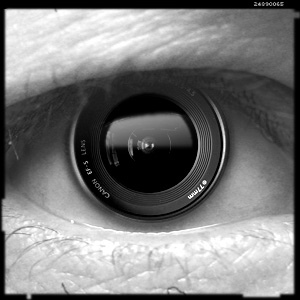Movies that Play in our Characters’ Heads
In novels, we are almost always in our characters’ heads. An entire story is told from the viewpoints of the various characters, colored by how they perceive and experience their world and the story that unfolds in the plot. In real life, we spend a lot of time thinking. Often—sometimes more than often—we spend immersed in imaging. We imagine our futures: what our future spouse might be like, what our dream job might entail, what the future might hold in every which way. Every great achievement and invention in history began as an idea or dream in someone’s head. “Dreaming” like this is common to everyone and a large part of life and who we are.
Thinking Isn’t Dreaming
Novelists can show their characters thinking about something, and they do this a lot. And that is often a great way to reveal character and fill in bits of backstory. But thinking about something isn’t quite the same as “dreaming” about it. I am not talking about the kind of dreaming we do when we’re asleep, and a whole lot of interesting camera shots and cinematic technique can be used to portray the actual dream state. I’m talking about those moments when we get lost in our imaginings. It might be simply summed up as daydreaming. And when we daydream, it’s as if we are playing out a live-action scene from a movie in our heads, with ourselves as the star of the show.
So how might a novelist play out a scene in a character’s head—whether it be a memory or something he’s imagining, perhaps a dream for the future?
We’re going to take a look at Marathon Man, a conspiracy thriller written by William Goldman (The Princess Bride author) in 1974, which shows beautifully how a novelist can use this cinematic technique. Goldman began as a novelist, and wrote five novels and had three plays on Broadway before he turned his attention to screenwriting. Novelists who are also screenwriters understand and utilize cinematic secrets to best effect in their storytelling, for they understand both how a scene needs to visually unfold on the big screen as well as how to translate the desired effect into prose in their novels.
Take a Look at Novelists Who Are Also Screenwriters
Looking at and comparing a novel and screenplay written by the same author gives some great insights into cinematic technique and how to “adapt” camera shots to supercharge your novel. Earlier this year we took a look at Michael Crichton’s Jurassic Park earlier to see how one of his Establishing Shots portrayed in the film was conveyed in a scene in his novel. There are numerous writers who are successful at both film and novel writing, and if you want to learn best how to infuse cinematic technique into your fiction, you may want to take some time to look at both their novels and the corresponding screenplays.
Of course, screenplays rarely reflect a novel precisely. Often scenes and plot elements that work in a novel don’t work well in a ninety-minute encapsulation of a story. Adapting a novel and turning it into a screenplay is a challenging endeavor, and not many novels are suitable for such transformation. But screenwriters who write their novels cinematically make it easy for adaptation, as they have already constructed the scenes in their novel to play out and feel like movie scenes.
The Movies That Play in our Heads
The movie Marathon Man (1976) opens with archival footage of marathon champion Abebe Bikila from the 1964 Olympics. Tension builds with pitch-bending strings as the older black-and-white footage fades into graduate student Thomas Babington “Babe” Levy (Dustin Hoffman) jogging around the Central Park Reservoir in New York. While he runs, we get intercuts of Nazi war criminal Dr. Szell getting diamonds out of a safe-deposit box.
However, In Goldman’s novel, we get to go deep in Levy’s head—something that makes novels so different and often more powerful than movies—to understand right away just who Levy is and what his hopes and dreams are. Instead of Goldman “telling” all this with narrative in the opening of the book, he shows it in a creative cinematic way—the way we often do in our heads: through imagining. Look how much we learn about Levy by watching the scene playing out inside his head.
So at half-past five Levy ran. Clearly he was faster than anyone around, so if you were a casual observer it would have been logical to assume that this rather tallish, sort of slender fellow with the running style not unreminiscent of a goose covered ground really quite well.
But you had to consider his daydreams.
He was going to run the marathon. Like Nurmi. Like the already mythical Nurmi. Years from now, all across the world, track bugs would agonize over who was the greatest . . . some of them would argue, “no one would ever run the final five miles the way Levy ran them,” and others would counter that by the time the last five miles came, Burmi would be so far ahead, it wouldn’t matter how fast Levy ran them, and so the debate would rage, expert against expert, down the decades.
For Levy was not going to be a marathon man; anyone could be that if you just devoted your life to it. No, he was going to be the marathon man.
. . . Right now he only had the B.Litt. he’d won at Oxford, and could race but fifteen miles without fatigue. But give him a few more years and he would be both PhD and Champion. And the crowds would sing out “Lee-vee, Lee-vee,” sending him on to undreamed-of triumphs as now sports fans shouted, “Dee-fense” as they urged on their heroes.
“Lee-vee, Lee-vee—”
And they wouldn’t care about how awkwardly he might run. It wouldn’t matter to them that he was over six feet tall and under a hundred and fifty pounds, no matter how many milkshakes he downed per day in an effort to move up from skinny to slender.
“Lee-vee! Lee-vee!—”
It wouldn’t bother them that he had a stupid cowlick and the face of an Indiana farmer, that even after spending three years in England he still had the expression of someone you just knew would buy the Brooklyn Bridge if you offered him the chance. He was beloved by few, known by none save, thank God for Doc, Doc. But that would change. Oh yes, oh yes.
“LEE-VEE . . . LEEEEEEE-VEE.”
There he was now, up ahead and running with the firm knowledge that no one could ever conquer him, except possibly Mercury. Tireless, fabled, arrogant, unbeatable, the Flying Finn himself, Nurmi.
Levy picked up his pace.
The end of the race was still miles off, but now was the greatest test, the test of the heart.
Levy picked up his pace again.
Levy was gaining.
The half-million people lining the course could not believe it. They screamed, they surged almost out of control. It could not be happening but there it was—Levy was gaining on Nurmi.
And the race inside Levy’s head continues until he’s mentally interrupted by his chronic toothache, followed by thoughts of needing to see a dentist, which then goes into other thoughts about his job, segueing into other details important to setting up the premise and overarching plot.
Daydreaming is a big part of our lives. Whether we imagine a future situation for just a few seconds or we let our imaginations wander into a dreamlike envisioning of some event, we all play out these moments in our heads. And so should our characters. A “daydream” moment can be emblematic, and can be the high point of a scene or even a novel. But when you do include moments like this in your book, be sure to have the camera rolling and bring it to life with cinematic flair. We’ll cover this a bit more in next week’s post.
This week, think of a place in your novel for a daydream. If possible, put it where it can be greatly meaningful or symbolic for your character. Novelists should know the greatest dreams and fears of all their characters, so what better way to reveal these things than through a moment of “daydreaming.” Try writing the segment using an appropriate camera shot, with your character in the starring role of his own movie, whether it be a victorious fantasy or his greatest fear coming true.












The Prince lounged effortlessly on the sleek modern divan. His long booted legs rested on the large agate coffee table. His old-fashioned black clothing hugged his relaxed body and was in stark contrast to the modern decor of the sumptious room.
His eyes were closed. In his right hand he held a crystal goblet half full of a thick crimson liquid. He slowly raised it to his lips. Nostrils flaring slightly, he inhaled deeply as he savored the liquid.
The heady odor swept him back to the night before, to the tall red head. He licked the rim of the crystal in his hand. The salty sweet taste flooded through his body.
She had walked toward him, poised on four inch stiletto heels. Her body, clothed in tight fitting slim jeans and a tiny tank top, screamed sex. Her inviting smile and direct gaze invited him in. He had been standing partially conceale by deep shadow. Slowly he stepped into the light, closely watching her expression as she observed him. Her green eyes grew wide with interest. Her stance betrayed no fear as she approached him.
His keen sence of smell detected every nuance of her emotions as they came together. When they were almost touching, face to face, he smiled. Light from the streetlights glinted from his long sharp incisors. He heard her sharp intake of breath, felt her pulse speed, and smelled the sharp acrid odor of her fear. Beneath the fear was
another headier scent. Suddenly he was consumed with hunger.
It had all been too easy, really. He missed the nights of prowling for hours before finding suitable prey. He missed the chase and the capture. Humans today didn’t run and they didn’t fight. They offered themselves like cattle for slaughter.
Still, it was good, very good. He took another deep draught from the crimson beverage. The bright light of morning was creeping across the carpeted wooden floor. He stood, streaching his elegant body effortlessly. He drained the cup and sat it on a table. Time for sleep. Tomorrow would bring another night, another stalk.
” This is one of the main characters from a book I am working on. Please let me hear some comments.”
Thanks for sharing that. You have a nice transition moving into his thoughts of her that feels very natural and has great sensory detail!